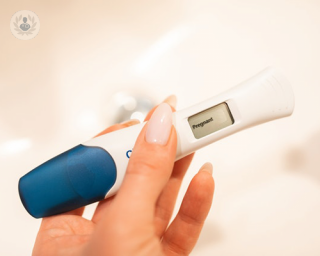Intrauterine insemination (IUI)
Mr Rafet Gazvani - Fertility specialist
Created on: 02-10-2017
Updated on: 09-04-2023
Edited by: Aoife Maguire

What is intrauterine insemination?
Intrauterine insemination (IUI) is one of the most used techniques in reproductive medicine. Sperm is deposited in the woman's vagina through artificial means and not sexual intercourse. The semen used can belong to the partner of the woman who wants to become pregnant or it can come from a sperm donor.
What does it consist of?
The technique consists of collecting a semen sample from a man and processing it in a lab to concentrate the sperm and separate it from the rest of seminal plasma and other cells. The doctor inserts a speculum into the vagina to view the cervix and injects the semen into the uterus. Generally, it’s a painless procedure and is usually accompanied by ovarian stimulation techniques and ovulation control to find out when the best time to do the insemination is. If the first attempt does not end in pregnancy, it can be done again every month continuously as it’s not necessary to rest between cycles.
Why is it done?
IUI is performed to shorten the path that sperm takes to the fallopian tubes and therefore, providing a greater chance that more sperm that will reach the egg. The goal is to increase the chance of pregnancy in couples who have difficulties conceiving, which may be due to:
- A woman’s age
- Damage or obstruction in the fallopian tubes caused by a pelvic inflammatory disease or previous reproductive surgery
- Endometriosis
- Male infertility for reasons such as decreased sperm count and obstruction
How do you prepare for intrauterine insemination?
You’ll need to consult with your fertility specialist on if IUI will provide you with the highest chance of success. Before being able to undergo IUI, the woman receiving the sperm and their partner or sperm donor will need to be assessed to determine why conceiving has been difficult.
Aftercare
Once the insemination has been carried out, the woman will be examined to check if the procedure has been successful. If so, the pregnancy runs the same as pregnancy without prior treatment. However, problems can arise once the woman has gone through the insemination process, such as ovarian hyperstimulation syndrome which can occur due to the ovarian stimulation techniques, although this is infrequent.
Alternatives
Intrauterine insemination (IUI) is one of several methods of assisted reproductive technology. Another of the most common methods is IVF (in vitro fertilisation).



